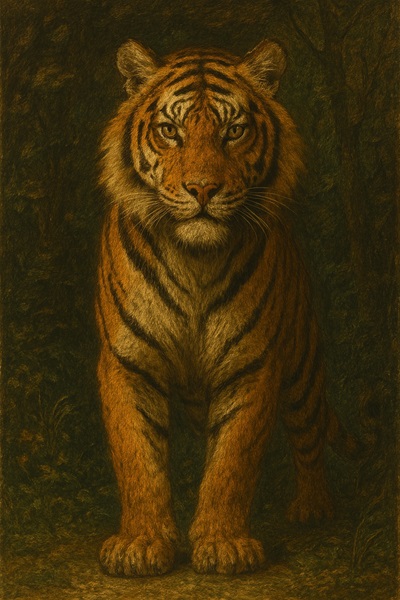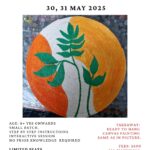The Tyger
By William Blake
Tyger Tyger, burning bright,
In the forests of the night;
What immortal hand or eye,
Could frame thy fearful symmetry?
In what distant deeps or skies.
Burnt the fire of thine eyes?
On what wings dare he aspire?
What the hand, dare seize the fire?
And what shoulder, & what art,
Could twist the sinews of thy heart?
And when thy heart began to beat,
What dread hand? & what dread feet?
What the hammer? what the chain,
In what furnace was thy brain?
What the anvil? what dread grasp,
Dare its deadly terrors clasp!
When the stars threw down their spears
And water’d heaven with their tears:
Did he smile his work to see?
Did he who made the Lamb make thee?
Tyger Tyger burning bright,
In the forests of the night:
What immortal hand or eye,
Dare frame thy fearful symmetry?
Introduction to the Poet
William Blake (1757-1827) was an English poet, painter, and printmaker who created some of the most imaginative and profound works in English literature. Born in London, Blake began having visions as a child that influenced his unique artistic perspective. He was a skilled engraver who developed innovative techniques to combine text and images in his publications. Blake is known for his two famous poetry collections: “Songs of Innocence” (1789) and “Songs of Experience” (1794), with “The Tyger” appearing in the latter. His work often explores contrasting states such as innocence and experience, good and evil, and heaven and hell. Though Blake was not widely recognized during his lifetime, he is now considered a major figure of the Romantic period. His poetry combines simplicity of language with complexity of thought, making his work accessible to young readers while offering deeper meanings for more advanced study.
About the Poem
“The Tyger” is William Blake’s most famous poem, published in his collection “Songs of Experience” in 1794. Through powerful imagery and thought-provoking questions, the poem explores the mystery of creation and the nature of good and evil. The tiger, with its fearsome beauty and power, raises questions about the creator who could design such a magnificent but dangerous creature. Blake uses the imagery of a blacksmith’s forge—with hammer, chain, furnace, and anvil—to suggest the deliberate crafting of this awesome animal. The poem’s famous contrast between the tiger and the lamb (referring to Blake’s earlier poem “The Lamb” from “Songs of Innocence”) invites readers to consider how the same creator could make both gentle and fierce creatures. Though written over 200 years ago, “The Tyger” continues to captivate readers with its musical rhythm, vivid imagery, and profound questions about creation, nature, and the coexistence of beauty and terror in our world.
Image Courtesy

















